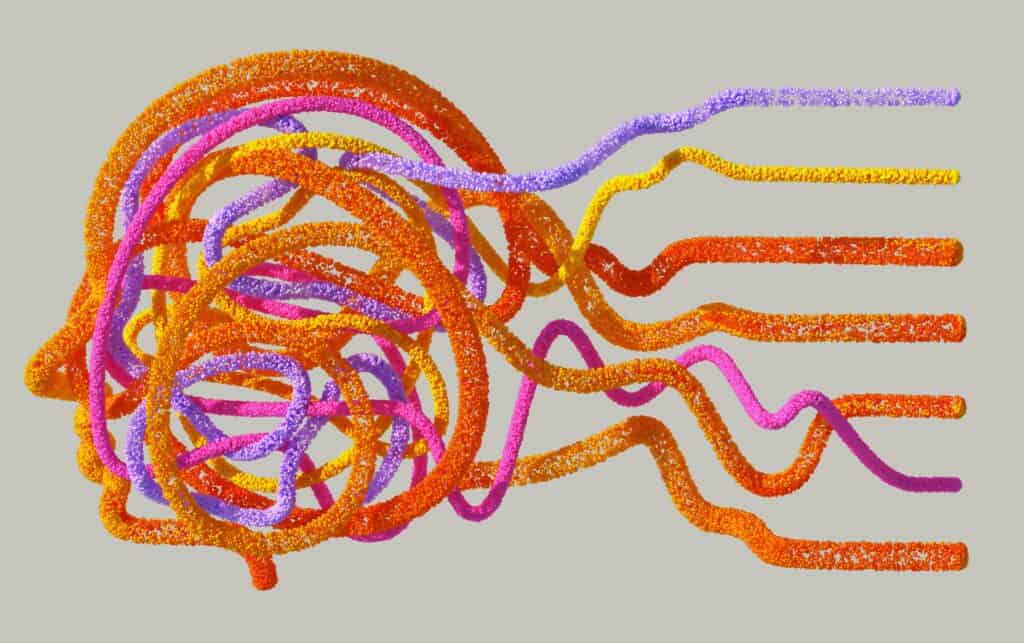In the bustling digital landscape of the 21st century, there is little dispute about the importance and significance of a website. A dynamic and interactive space where businesses connect with their audience, for companies in Surrey and beyond, a professionally crafted website is the cornerstone of their digital presence. But what truly separates a good website from a great one? The answer often lies in the subtle yet powerful principles of web design psychology.
As a Surrey web design agency, we at Full Stack Industries believe that understanding the user’s mind is just as crucial as mastering the latest coding languages. It’s about creating an online experience that is not only visually stunning but also intuitive, persuasive, and ultimately, effective in guiding user behaviour. This in-depth exploration of the psychology of web design will delve into the fascinating interplay between aesthetics, cognition, and decision-making, providing insight into how a strategic approach to design can enhance your online presence.

The Unseen Hand: Cognitive Biases in Web Design
Our brains are wired to take convenient and logical mental shortcuts to process the vast amount of information we encounter daily. These shortcuts, known as cognitive biases, can significantly influence how users perceive and interact with a website. A savvy digital agency will leverage this understanding to create a more seamless and enjoyable user journey.
- The Anchoring Bias: First impressions matter. The initial piece of information a user sees on your website acts as an “anchor,” influencing their subsequent judgments. This is why a strong, clear value proposition and a visually appealing hero section are paramount. For instance, prominently displaying a compelling statistic or a standout testimonial can anchor the user’s perception of your brand’s credibility.
- The Effect of Social Proof: People are more likely to adopt a belief or take an action if they see others doing it. This is where social proof becomes a powerful tool in web design. Displaying client logos, customer testimonials, and case studies can create a sense of trust and encourage new users to engage with your services. For a Surrey-based business, showcasing positive feedback from local clients can be particularly persuasive.
- The Von Restorff Effect: Also known as the isolation effect, is a principle that states an object that stands out from its surroundings is more likely to be remembered. In web design, this can be achieved by using a contrasting colour for a call-to-action (CTA) button or by employing a unique and eye-catching graphic for a key piece of information. This ensures that the most critical elements on your page don’t get lost in the visual noise.
- Confirmation Bias: We tend to favour information that confirms our existing beliefs. A well-designed website will present information in a way that aligns with the user’s needs and expectations. By understanding your target audience, you can tailor your messaging and visuals to resonate with their preconceived notions, making them more receptive to your offerings.
Structuring for Success: The Power of Visual Hierarchy
Imagine walking into a library with no signs or sections – finding the book you want would be a frustrating and time-consuming ordeal. A website without a clear visual hierarchy brings an incredibly similar feeling. Visual hierarchy is the art of arranging elements on a page in a way that communicates their order of importance, guiding the user’s eye and making information easy to digest.
Key elements that contribute to a strong visual hierarchy include:
- Size and Scale: Larger elements naturally draw more attention. Your most important message or CTA should be one of the most prominent features on the page.
- Colour and Contrast: Bold and contrasting colours can be used to highlight key information and create focal points. A strategically placed splash of colour can make a button or a headline impossible to ignore.
- Typography: The size, weight, and style of your fonts can create a clear hierarchy within your text, allowing for a well-organised and visually appealing presentation. Headings should be larger and bolder than subheadings, which in turn should be more prominent than the body text.
- Whitespace: The space around elements is just as important as the elements themselves. Ample whitespace can reduce cognitive load, improve readability, and create a sense of sophistication and clarity.
By mastering visual hierarchy, a skilled web design agency can effectively control the narrative of a webpage, guiding the user on a carefully curated journey toward a desired action.
Don’t Overthink It: The Principle of Cognitive Load
The human brain can only do so much at any given moment. When the brain is at ‘capacity’, it is often referred to as ‘cognitive load’. When a website is confusing, cluttered, or unpredictable, it can be overwhelming and require a significant amount of mental energy just to figure it out. This creates a high cognitive load, and the most common result is frustration, leading the user to abandon your site for a competitor’s. The goal is to create a seamless experience that feels effortless.
A skilled web design agency actively works to lower cognitive load by focusing on clarity and simplicity. This can be achieved in several practical ways:
- Relying on Conventions: Users expect certain things to be in familiar places. A logo in the top-left corner that links to the homepage, a navigation menu across the top, and contact information in the footer are established web conventions. Reinventing the wheel forces users to think, while sticking to these patterns makes your site instantly feel intuitive.
- Minimising Choices: Presenting too many options at once can lead to ‘analysis paralysis’, where a user is so overwhelmed by choice that they make no decision at all. Simplifying navigation menus, creating clear user pathways, and focusing each page on one primary goal can dramatically reduce this burden.
- Keeping it Clean: Every element on a page adds to the cognitive load. By using clear, concise language, breaking text into short, digestible paragraphs with bullet points, and using ample whitespace, you allow the user’s brain to breathe and focus on what truly matters.
By keeping things simple, you create a website that feels helpful and efficient. This builds trust and makes visitors far more likely to engage with your content and complete their desired actions.
The Art of Consideration: Designing for Decision-Making
Design is not about trickery or manipulation; it’s about understanding human motivation and using that knowledge to create a more effective and user-centric experience. When applied ethically, persuasive design techniques can help users achieve their goals while also meeting your business objectives.
Here are some design techniques to consider:
- Reciprocity: The principle of reciprocity suggests that when you offer something of value, people are more likely to return the favour. In the digital realm, this could be a free downloadable guide, a helpful blog post (like this one!), or a no-obligation consultation. By providing value upfront, you build goodwill and increase the likelihood of conversion.
- Scarcity and Urgency: The fear of missing out (FOMO) is a powerful motivator. Limited-time offers, countdown timers, and notifications about low stock can encourage users to take immediate action. However, these tactics must be used honestly. Fabricating scarcity can damage trust and harm your brand’s reputation.
- Authority: People are more likely to trust and be persuaded by those they perceive as experts. Showcasing awards, certifications, and media mentions can establish your authority in your field. As a digital agency, highlighting a portfolio of successful projects for recognisable brands can be a powerful form of authority.
The Surrey Connection: Localisation and Trust
For a business targeting a specific geographic area, such as Surrey, incorporating local elements into your web design can significantly enhance trust and relevance. This goes beyond simply listing your address. It’s about demonstrating a genuine connection to the local community.
- Showcase Local Projects: Feature case studies and portfolio pieces from businesses in Surrey. This not only demonstrates your expertise but also shows that you understand the local market.
- Use Local Imagery: Authentic photographs of your team at your Surrey office or images of local landmarks can create a stronger sense of place and connection than generic stock photos.
- Targeted Content: Develop blog posts and resources tailored to the specific needs and challenges of businesses in Surrey. This positions you as a valuable local resource and a go-to digital agency for the region.

The Final Word: Weaving it All Together for a Seamless Experience
Ultimately, the psychology of web design is about empathy. It’s about putting yourself in the user’s shoes and designing an experience that is intuitive, engaging, and trustworthy. By understanding the cognitive biases that shape our decisions, the principles of visual hierarchy that guide our attention, and the ethical techniques of persuasive design, you can create a website that not only looks beautiful but also delivers tangible results.
At Full Stack Industries, we take pride in being more than just a web design agency. We are strategic partners who delve deep into the psychology of your target audience to create bespoke digital experiences that drive growth.
If you’re a Surrey-based business looking to boost your online presence, we invite you to get in touch and discover how our user-centric approach to web design can help you achieve your objectives.






